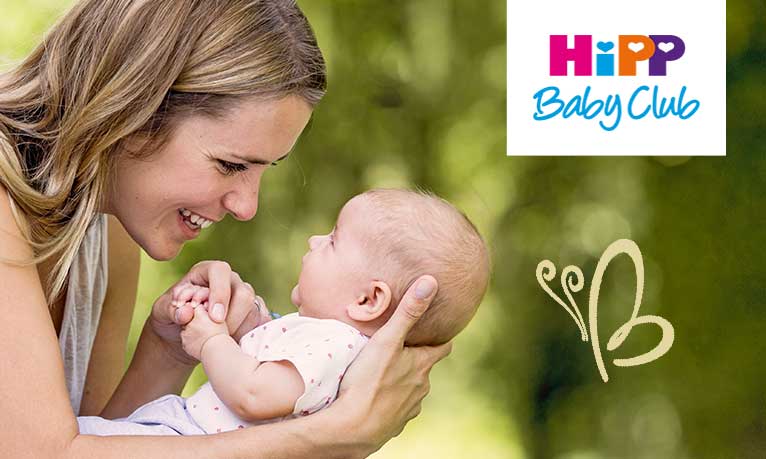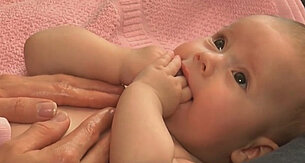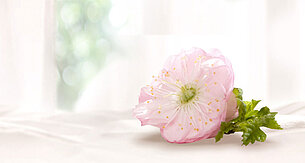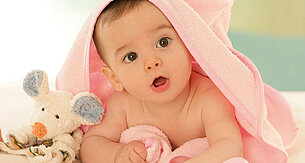Diaper changing – our tips for you
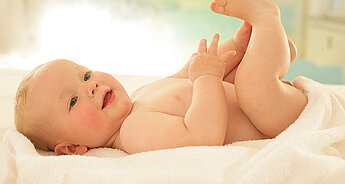
A child needs its diaper changed about 4,000 times before it is potty-trained. Newborns urinate up to 20 times a day.
To master this daily task, here are a few tips.
What you need for diaper changing:
- a soft wash cloth, warm water, a paper towel with baby oil or a wet wipe
- if needed, soreness protection cream
- a clean diaper
- for older babies, a toy to distract them
How it works
Turn on the heater above the changing table. Make the mobile move or, depending on the child’s age, give the child a toy to play with.
First take off the old diaper. Before putting on the new diaper, clean the genital area with a wash cloth, oiled cloth or wet wipe. Thoroughly dry the skin (if necessary, pat dry). Cleaning is especially important after a bowel movement. If needed, apply HiPP Diaper Rash Cream. Put the new diaper on.
Never leave your baby unattended on the changing table.
Especially for girls:
Always wipe from front to back, so that no entero-bacteria can enter the vagina.
Especially for boys:
Cover the penis with a cloth or diaper, in order to avoid being weed on.
Soreness – how to avoid skin irritation
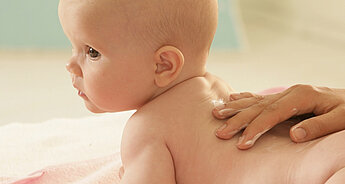
If your baby often has a sore bottom, it could be that the diaper is retaining too much moisture or letting too little air to the skin. Non-elastic diapers can also cause rubbing in the diaper area. Moisture from urine or stool that is not absorbed properly irritates sensitive baby skin. Stool bacteria and elements in urine can also irritate skin.
What helps to protect baby’s skin?
- Change the diaper often – dry diapers can reduce irritation.
- Use absorbent, elastic diapers.
- The diaper shouldn’t be too tight. There should be a finger’s clearance between diaper and stomach.
- After cleaning the genital area, always dry it well, especially in the folds, so that nothing can get sore. Gently pat dry, do not rub and don’t use a hairdryer.
- Leave the diaper off as much as possible so that air can get to the skin. Your baby will enjoy this!
- Cream can be applied to the diaper area as a protective measure so that faeces and urine cannot cause problems. Creams with zinc are ideal to additionally protect from moisture.
Prevention is better and easier than curing skin irritations. Parents should therefore know the “ABCDE” rule to avoid inflammation of their baby’s bottom. The letters stand for the following words:
Air: Children without diapers don’t get diaper rash. Leave the diaper off as often as possible.
Barriers: Regeneration of the skin barriers. A cream with zinc can help to protect the bottom from faeces and urine.
Cleansing: Regularly changing the diaper, cleaning and thorough drying by patting gently.
Diapers: Choose diapers with a high moisture intake (absorbent).
Education: Informing parents, because their knowledge can make the difference between skin becoming irritated or not.
Diaper Rash Cream and Wet Wipes
Wet wipes are very popular and especially practical when out and about. They are also ideal for cleaning hands and faces. Wipes without preservatives or perfumes are recommended.
In order to protect the skin against aggressive body fluids, the use of a protective cream that prevents soreness is ideal. A good ingredient is zinc as it protects against irritation and accelerates the regeneration process. Lipophile creams can be recommended as they have a water-repellent effect.

